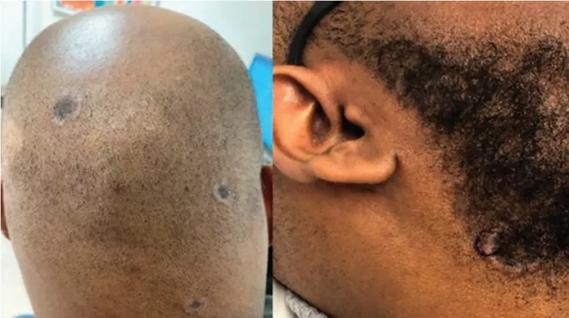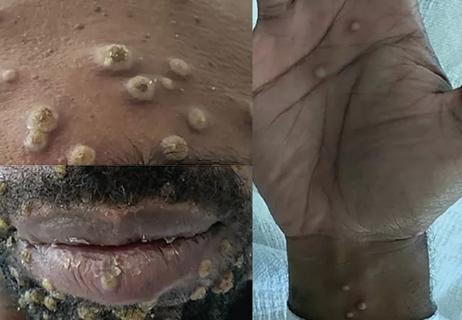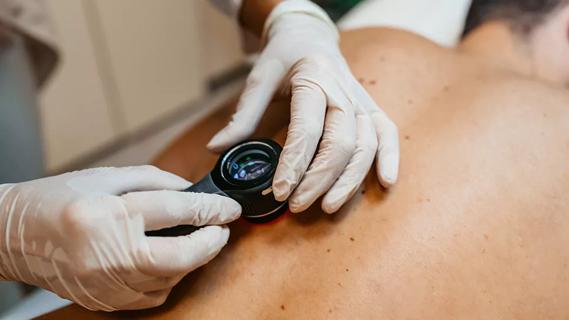Antioxidants, barrier-enhancing agents can improve thinning hair

Hair thinning is a common lament for both men and women and the impetus for countless over-the-counter remedies, yet surprisingly few effective treatment options exist. Now a new study by Cleveland Clinic scientists has shown that a treatment that combines antioxidants with barrier-enhancing ingredients to improve scalp health can significantly improve thinning hair.
Advertisement
Cleveland Clinic is a non-profit academic medical center. Advertising on our site helps support our mission. We do not endorse non-Cleveland Clinic products or services. Policy
The study, published in the International Journal of Cosmetic Science, examined treatments that have previously been used on the skin and applied them to the scalp for the first time. It also employed a novel technique for measuring hair loss, a condition that is often challenging to quantify.
“We saw significant improvement, which was a pleasant surprise because it’s so hard to achieve improvements in hair,” says Dr. Melissa Piliang, MD, a dermatologist and dermapathologist at Cleveland Clinic and coauthor of the study. “Even more striking, participants were telling us how happy they were with how their hair looked. They were actually noticing the results, and that was more than I expected.”
The randomized, double-blind study involved 360 male and female patients ages 25 to 65 with self-reported thinning hair. All patients had hair that was shoulder length or longer and were generally healthy. One group of patients received a therapeutic shampoo and leave-on treatment that contained functional antioxidant and barrier-enhancing agents: piroctone olamine, zinc pyrithione, zinc carbonate, niacinamide, panthenol, and caffeine. The other group received a placebo shampoo.
Researchers measured hair shedding and total hair count at the start of the study and after eight, 16, and 24 weeks. They also took hair samples and measured biomarkers of hair and scalp health. Participants also completed self-assessment questionnaires.
The group receiving the treatment shampoo saw significant improvement. Hair counts done at week 24 showed that patients undergoing treatment had an average total hair count increase of 5.68 hairs per square centimeter, compared with the placebo group, which had no change. The treatment group also showed a significantly lower number of shed hairs after six and eight weeks.
Advertisement
Dr. Piliang explains that the study was based on the theory that hair loss is closely tied to skin and scalp health. Oxidative stress is known to play a role in age-related skin damage, and researchers thought it might play a role in the scalp as well.
“I like to think that a healthy scalp is a more fertile field. It’s like having good soil for your hair to grow,” she says. “If there’s inflammation in the scalp – scale, yeast overgrowth, itchiness – the theory was that maybe all of those things could impede hair growth and contribute to shedding.”
Researchers used established methods for counting hairs, marking a small area on the scalp and using imaging technology to obtain a total hair count. They also developed a novel technique for measuring hair shedding. Study participants were asked to refrain from washing or brushing their hair and were told to keep their hair pulled back in a ponytail for 24 hours prior to a visit. Their hair was then combed out over a collection box, where a sticky pad was used to collect any shed hairs. Researchers also used biomarkers to assess hair and scalp health.
“To measure these multiple things in combination — to show real improvement in scalp and hair health, as well as improvement in the shedding and hair count — is a new way of looking at hair loss,” she says.
Dr. Piliang notes that the study’s limitations include using a primarily white population and only measuring results for six months.
Dr. Piliang plans to start introducing the treatment option to patients in her clinic.
Advertisement
“It’s one thing to be part of a study that involves a regimented protocol, but it’s another thing to see how this approach works in day-to-day practice,” she explains. “The next step is to have my patients use it to see if they have the same positive experience.”
Advertisement
Advertisement

Consider secondary syphilis in the differential of annular lesions

Persistent rectal pain leads to diffuse pustules

Low-dose, monitored prescription therapy demonstrates success

Cleveland Clinic specialists author a review

Family history may eclipse sun exposure in some cases

Techniques are borrowed from rhinoplasty, malar augmentation and others

Two cases — both tremendously different in their level of complexity — illustrate the core principles of nasal reconstruction

Stress and immunosuppression can trigger reactivation of latent virus